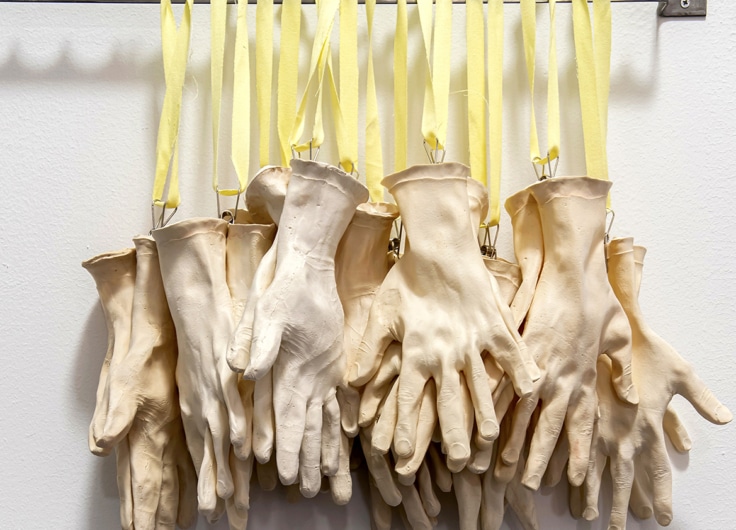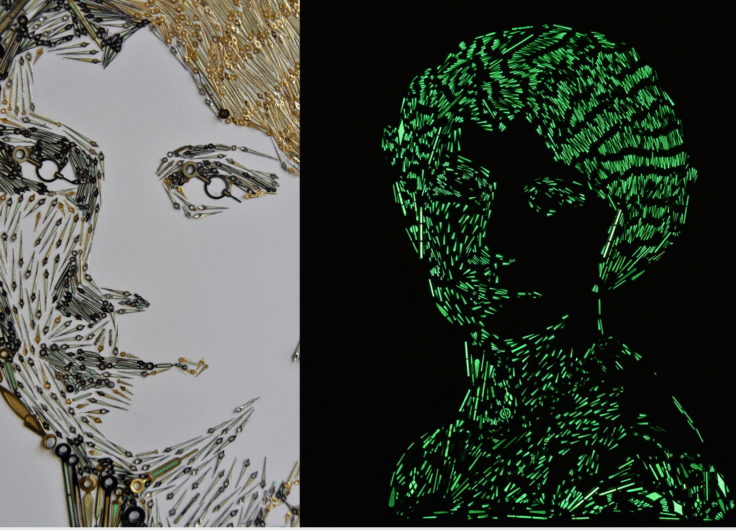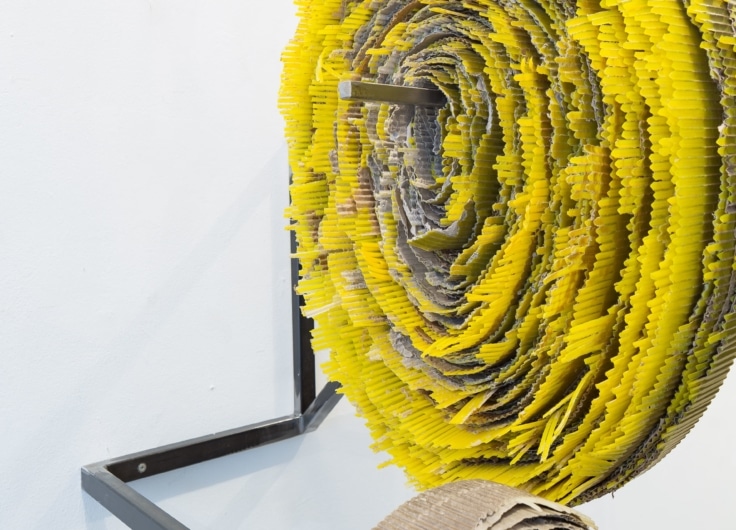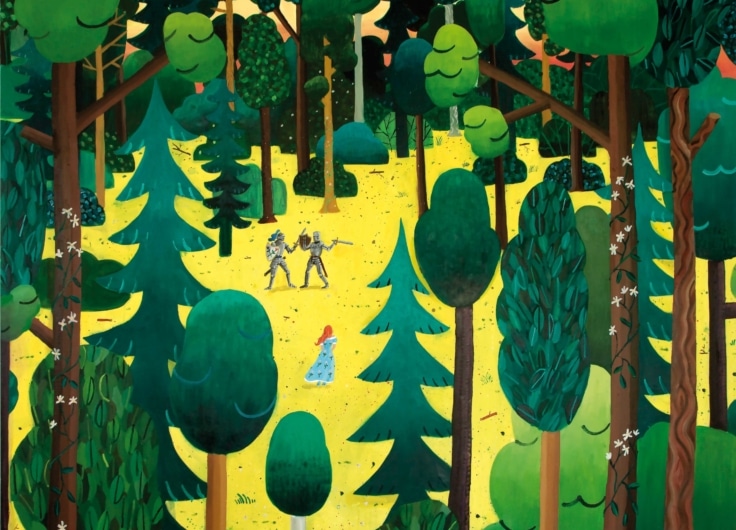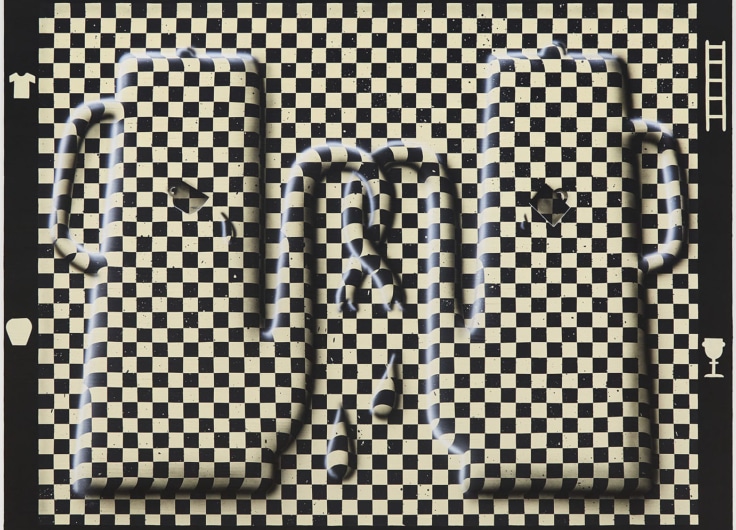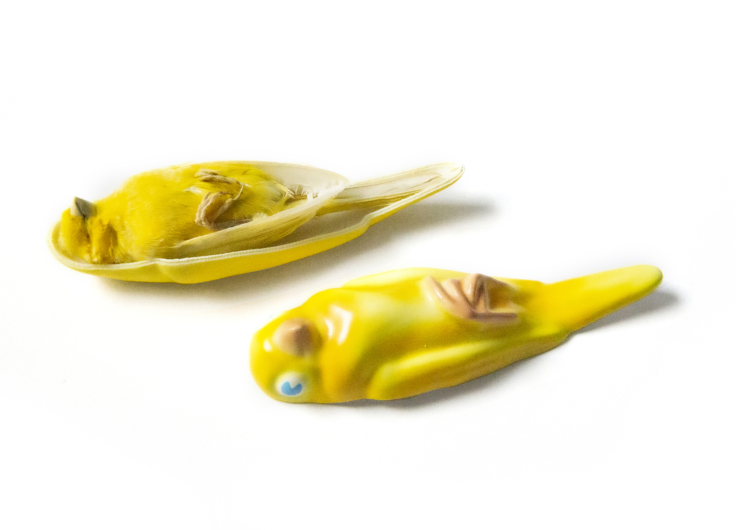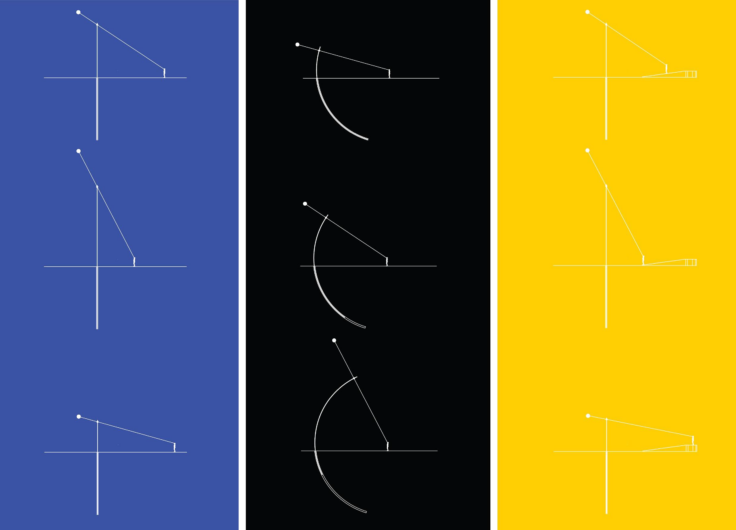Cream on Chrome Designs Technology with a Human Touch
Their name is a give-away: the work of Cream on Chrome joins rigidity and softness. The Rotterdam-based design duo explores the human dimension in technology with interactive design.
The project 4-D News (2019) was born during a conversation over a cup of coffee. The German-born Jonas Althaus (1989) and Swiss-native Martina Huynh (1992) met while studying at the Design Academy in Eindhoven. One of the things they discussed was the exuberance and helpfulness with which the Germans received refugees in 2015.
That was when [bondskanselier] Angela Merkel spoke the now famous line Wir schaffen das to indicate the country’s capacity for receiving the large influx of refugees. A few years down the line, that enthusiasm had cooled significantly, in society and the media. During their discussion, Althaus and Huynh noted that this change in attitudes had happened gradually and largely unnoticed.
Many conversations later, 4-D News, an installation resembling a newsroom, was realised. The section Geo-news is made up of a video screen with a physical scroll bar, reminiscent of a YouTube interface. By using it, visitors can jump through time between 1990 and 2019. For both years, and the period in between, the depiction of the Syrian city of Aleppo by the media is mapped out. At the end of 2000, it is still described as the centre of the Syrian economy. By the start of the next decennium, after the war broke out, the tone had changed to suit the new circumstances.
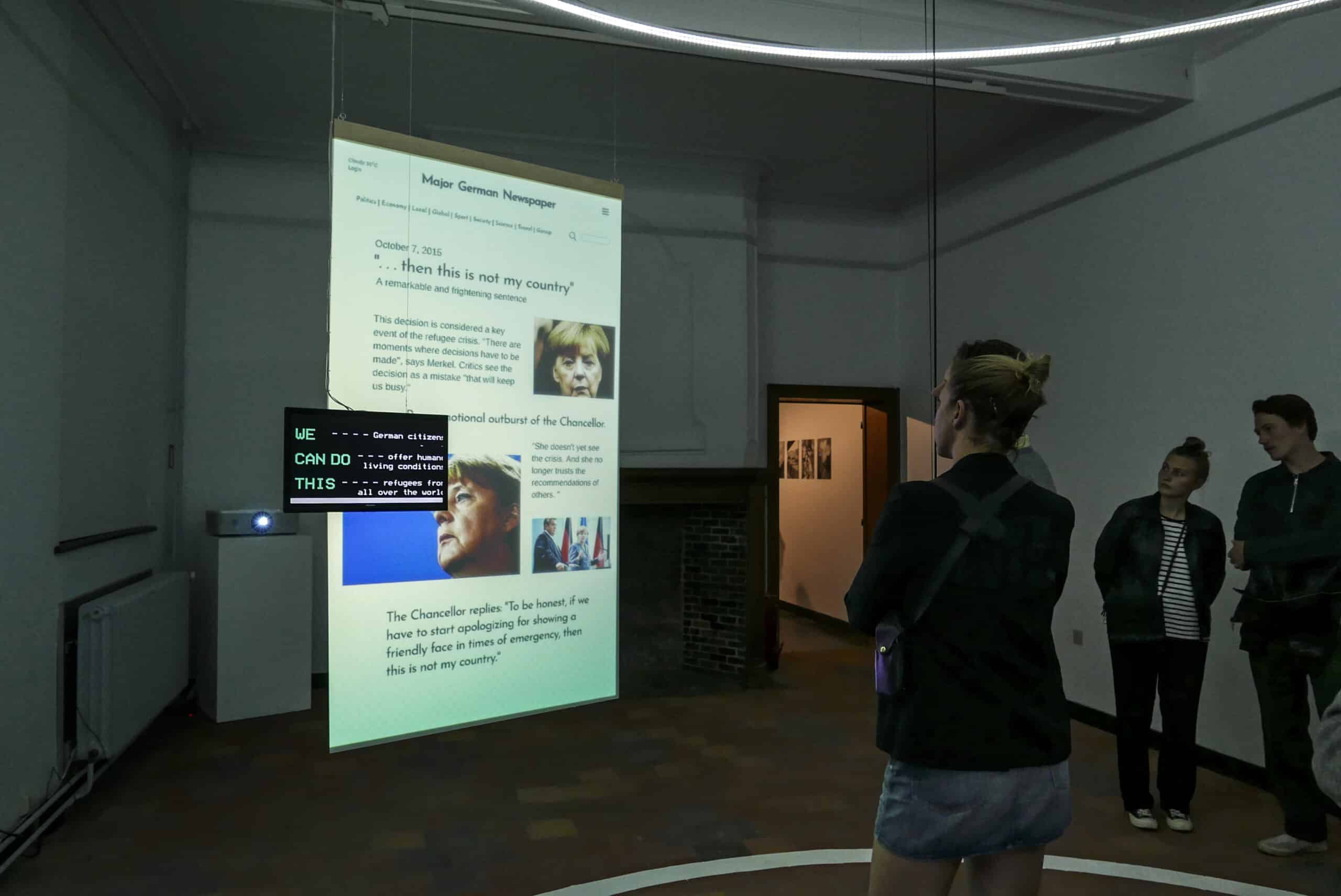 4-D News in Z33 (2019)
4-D News in Z33 (2019)© Martina Huynh
Another element of the work is Updating Article. It uses a similar scrolling system, this time showing fragments of newspaper articles covering the often-citated Wir schaffen das.
As time progressed, discussions around the slogan changed focus: from questioning how Germany could receive refugees, to how they could become part of the workforce. The project was first shown at Z33 (Hasselt) and subsequently at the Dutch Design Week in 2019 (Eindhoven).
Cream on Chrome is looking forward to showing the installation in Germany later this year. The specific theme of the project will ring much closer to home for those audiences.
Conversation and observation
Cream on Chrome operates in a world that goes beyond the product- or graphic design usually associated with design. Althaus remarks that the portfolio of many designers has grown. Especially in a time in which there is a lot of attention for the environment, design has become more than just creating consumer products. It has grown to encompass questions around sustainability, production processes and politics. This necessarily also involves doing expansive research, for which the designers consult with experts.
The themes covered by Cream on Chrome are divers: from basic income to smart homes
to journalism and globalisation. Many conversations precede the joining of form and matter. With each other, of course, but also with people outside their field and experience: from universities to journalists to Japanese workers.
Althaus and Huynh perceive their installations and performances as a way to start a conversation
Their methodology resembles, with some imagination, an hourglass or figure eight. On two ends, it is made up by conversations that then meet in the middle in the form of an installation. After all, Althaus and Huynh perceive their installations and performances as a way to start a conversation.
Already during their studies, the designers-in-training made use of each other’s expertise and knowledge, while supporting each other’s projects. For example, Althaus knew Huynh had the experience with making digital prototypes that he needed for his plan to produce work that discussed technological developments. In turn, Huynh was interested in the practical experience she knew a product designer like Althaus had.
Huynh had a knack for abstract, next-level thinking; Althaus was very interested in the everyday and sensory
Furthermore, their interests and perspectives matched: she had a knack for abstract, next-level thinking; he was very interested in the everyday and sensory. They matched so well that working together just made sense. Asides from projects initiated by both, they produce work in which one is the lead and the other has a supporting role. In those instances, you won’t know of it until the credits of the video documentation roll over the screen.
The fact that Cream on Chrome still present solo projects under a collaborative banner makes sense, not in the least because these projects are still the result of comparative attitudes. Althaus’ graduation project Within Touching Distance (2018) was an installation of three moving curtains that responded to the behaviour of audience members. In turn, they showed a range of responses; from feeling violated in their personal space, to appreciating the feeling of intimacy that smart-home technology can offer.
Huynh made the drawings for, amongst others, Basic Income Café (2019), in which the act of being together over coffee become both a practical and felt metaphor for basic income: everybody is given a cup of coffee upon entering the space, but if you want another you are obliged to grind your own beans. In both instances, interactivity offers a wonderful opportunity to study human behaviour. Through interactivity, design can function as an intelligent way to expose how our view of the world is shaped.
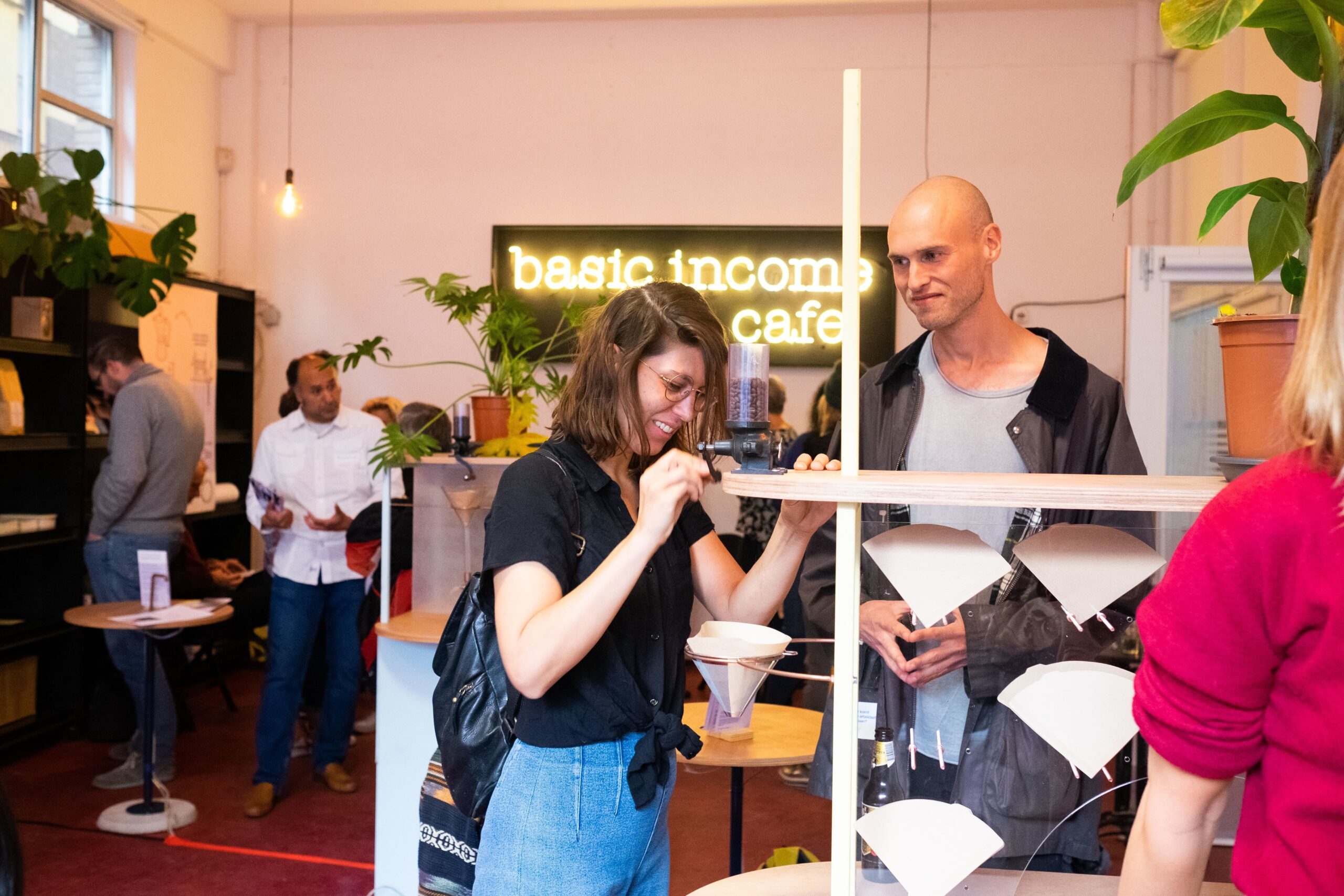 Basic Income Café (2019)
Basic Income Café (2019)© Sabine Rovers
The human dimension
While contemplating the right name for their partnership, Althaus and Huynh felt that it had to represent an apparent contradiction. Chrome is a reference to the cold, technical aspect of their work: to the equipment and programming that construct daily life. The cream, on the other hand, represents softness and warmth: the human dimension. The latter is also expressed as the inactivity that forces you to consider the themes at hand, fortified by your role as “spectator”.
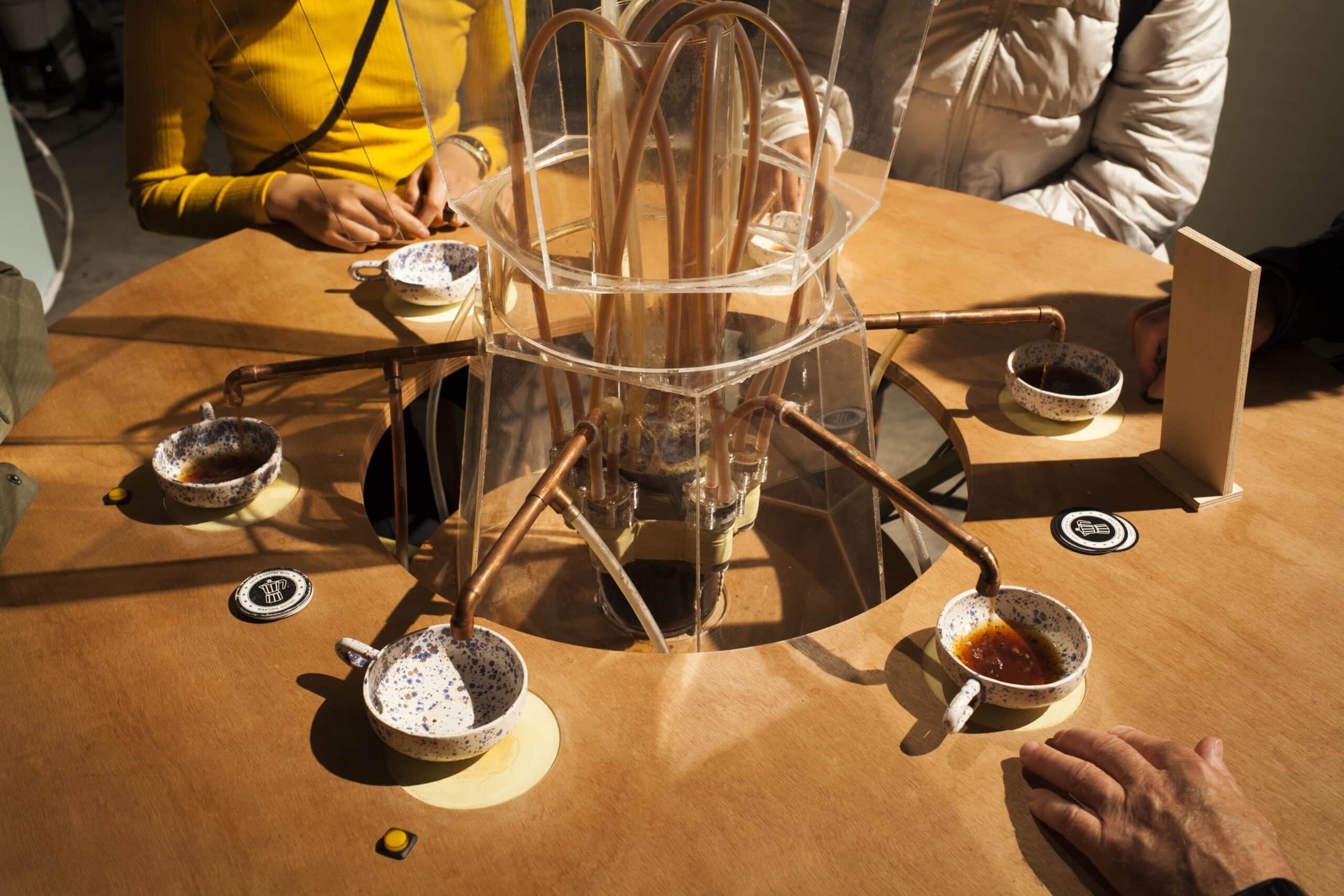 Basic Income Café (2019)
Basic Income Café (2019)© Iris Rijskamp
After Althaus had explained the concept of 4-D News to someone during the Dutch Design Week in 2019, the person in question remarked that “you could make this easily on your iPhone”. However, this would negate the unusual form: 4-D News makes information usually passed unnoticed suddenly very attractive to explore.
Considering the human dimension, Huynh remarks that although their work can be rather conceptual, it always connects back to daily life. In collaboration with yet another set of experts, they are now further developing 4-D News under the name Newsslider. This will become a practical tool with which the changing reporting around other subjects will be made visible.
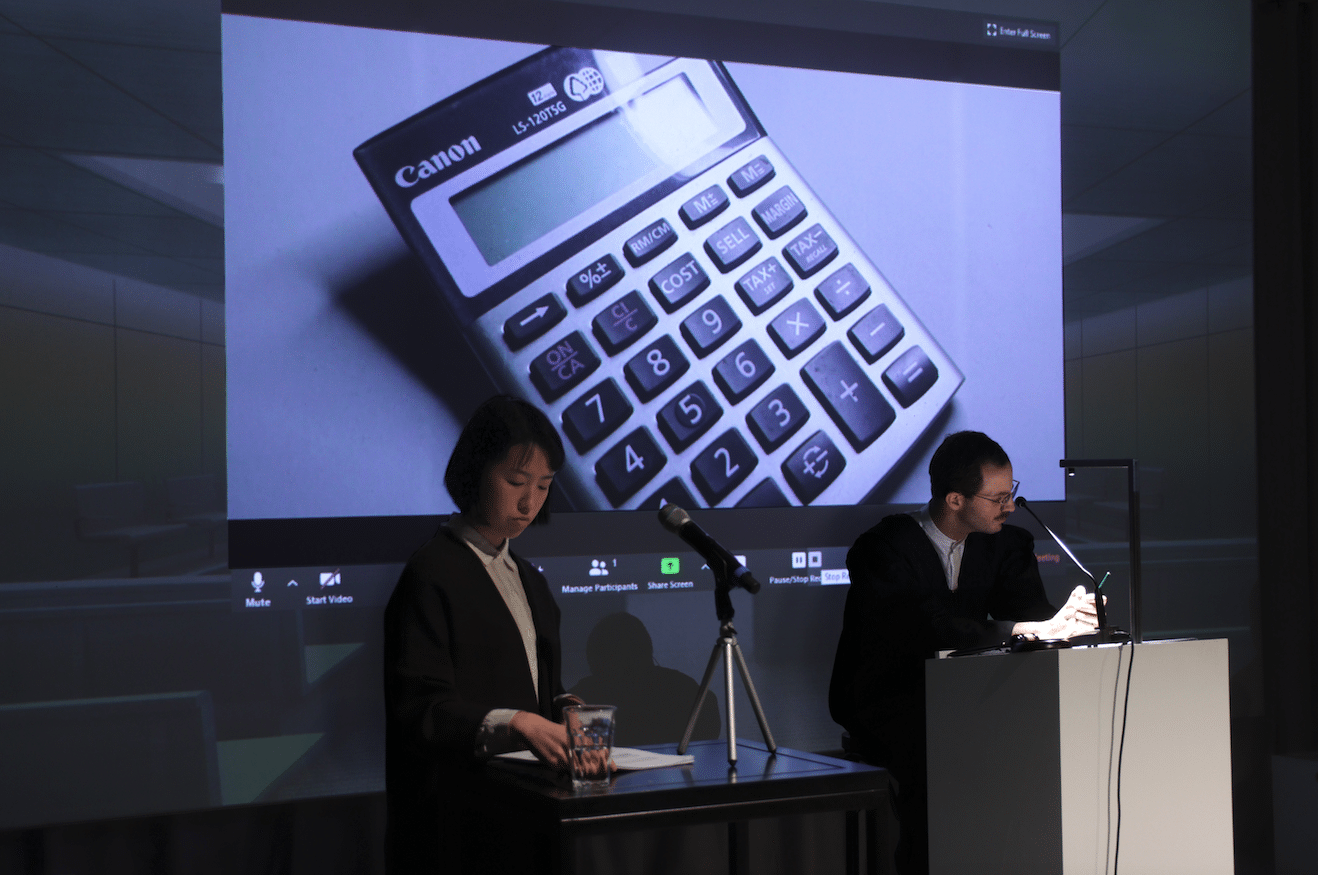 Proxies on Trial (2020)
Proxies on Trial (2020)© Flora Lechner
Recently, Cream on Chrome has expanded the limits of design even further with Proxies on Trial (2020), for which they borrow from both theatre and the legal world. The project presents a conceptual trial on excessive globalization. Dressed accordingly, Althaus and Huygn cross-examine a range of objects (!) on their role within it. A tie tries to maintain that he was only marginally involved in the problems surrounding multinationals and stock markets. The calculator seems to not want to expose too much of its own involvement. It is up to the visitors to judge the level of and severity of their crimes.
“Does this still constitute design”, I wonder out loud. “It does”, replies Huygn without any hesitation. Cream on Chrome creates situations in which such abstract subjects are finally discussed properly.
- Cream on Chrome has designed an interactive coffee machine, Green Box Barista, for Z33 in Hasselt.
- 4-D News is on show until 9 January 2022 at the Heimaten exhibition at MKG Hamburg.


